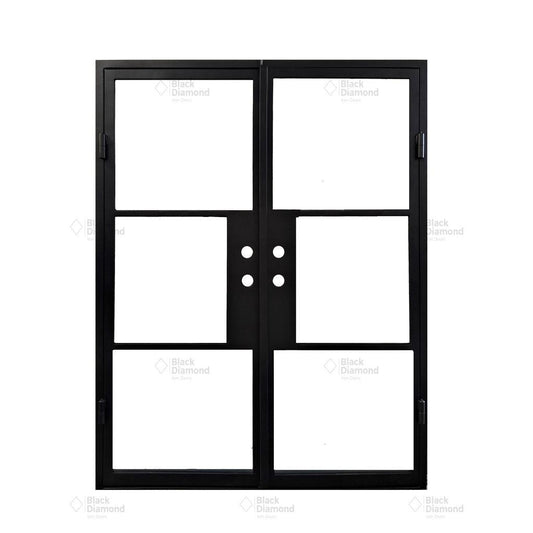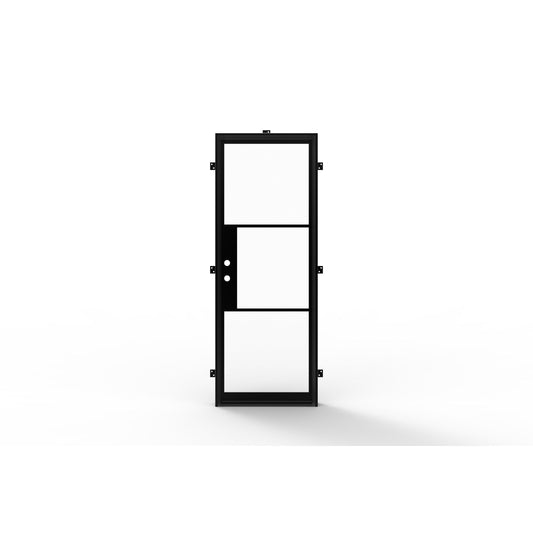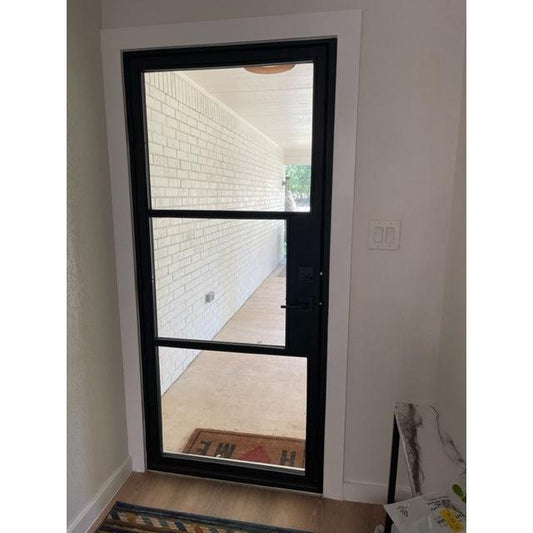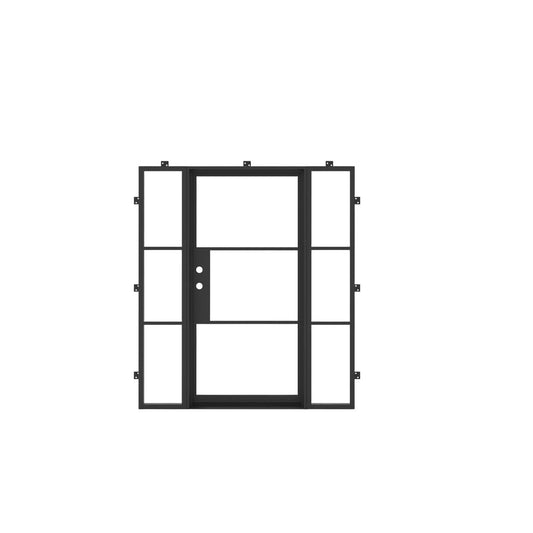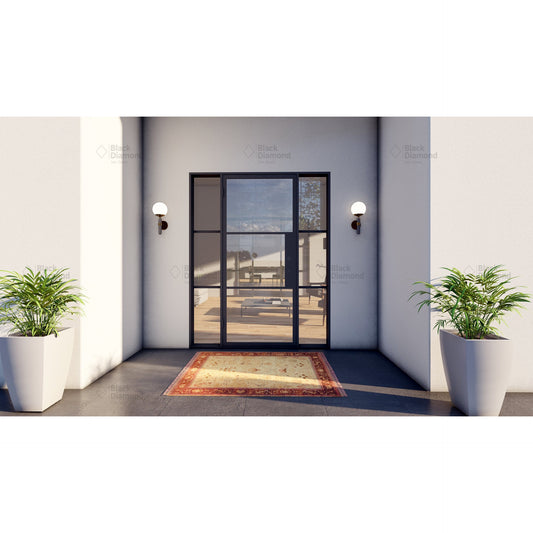Iron doors are made of steel and are subject to possible thermal transfer, which could result in condensation build up on the interior portion of the door during extremely cold time periods.
Metal is a poor conductor by nature. When the temperature varies greatly between the inside vs. outside of the home - foam is not a sufficient barrier, and a thermal barrier will be needed so that the cold will not transfer from the outside of the home in.
We recommend purchasing a thermally broken door in areas where the temperature can vary greatly to prevent heat transfer and condensation from occurring inside the home.
During the winter months when there are sustained periods of extreme cold, when temperatures drop below the 25-degree threshold, is when you may notice the above stated thermal transfer. While many factors effect energy efficiency, it is always best to check with your contractor about building codes in your specific area.
Black Diamond Iron Doors offers no warranty as to the suitability of using this product in a cold climate. Condensation and frosting are possible and in fact likely to occur when installed in cold climates.
Below is a U.S. map with "frost line" as defined by state. States in blue typically have harsher winters and are therefore classified as cold climate states.
Condensation problems can occur on non thermally broken iron doors; most frequently after cold weather installation but have shown much improvement after the first summer.
They can also be related to warm air vents directly blowing on the door, and/or due to overly high humidity/poor ventilation in the home.
Given that not all iron doors on the market have a thermal break, we cannot warrant against this issue but can advise on how to improve it.
There are many benefits to iron that outweigh any potential negatives. Besides the beauty of an iron door, iron will not rot, will not bow and will not need refinishing every 2 years like a wood door.


